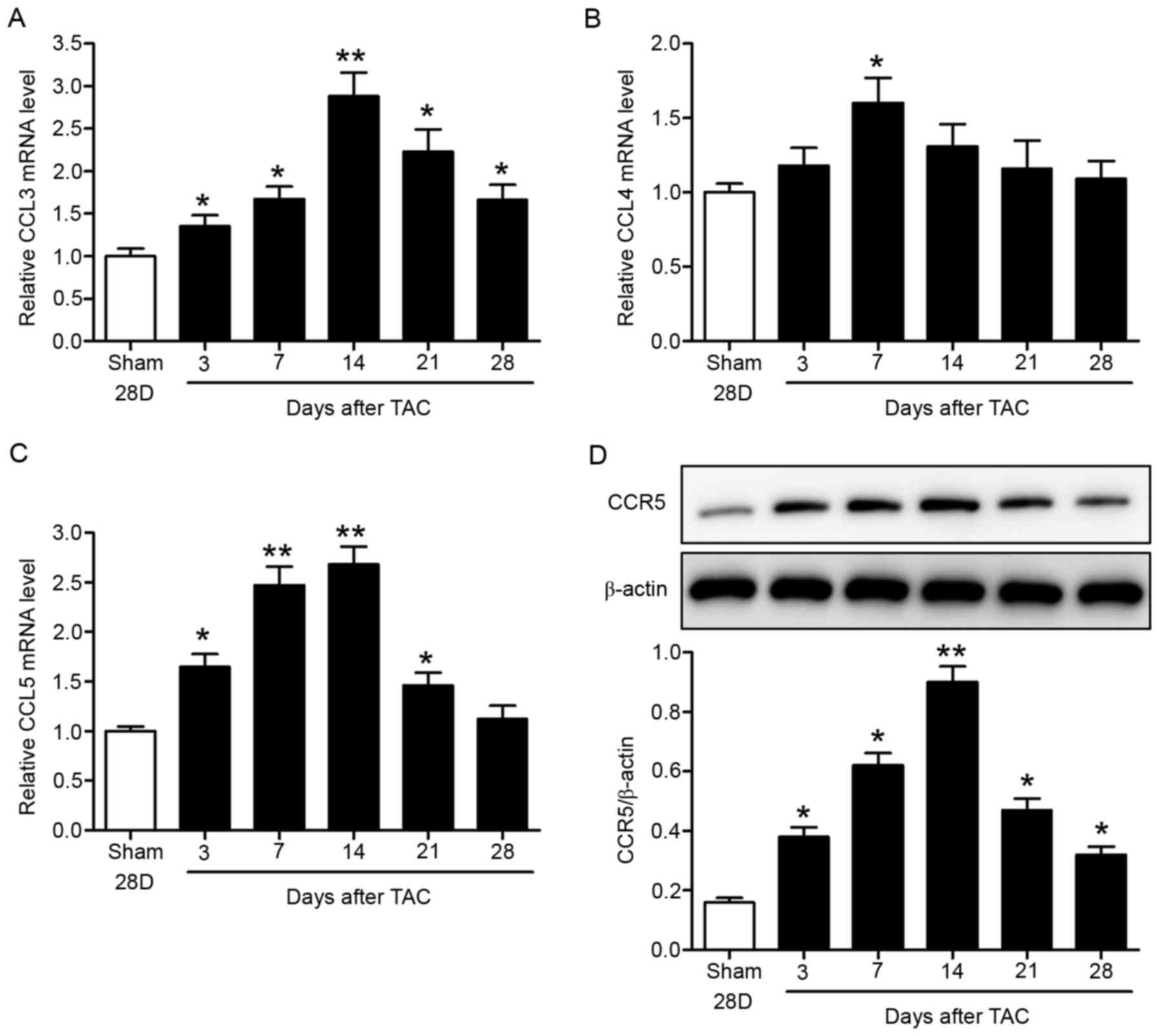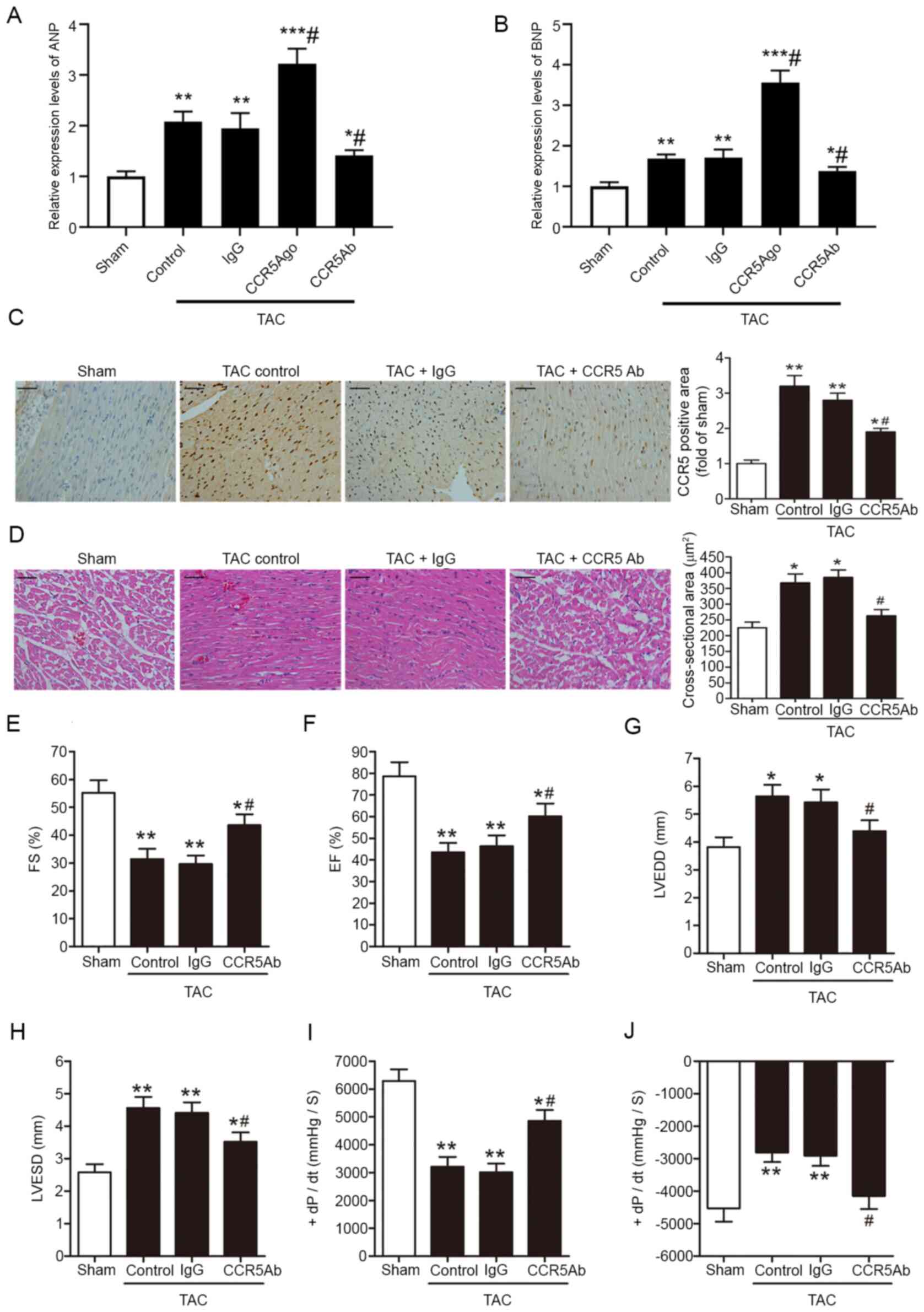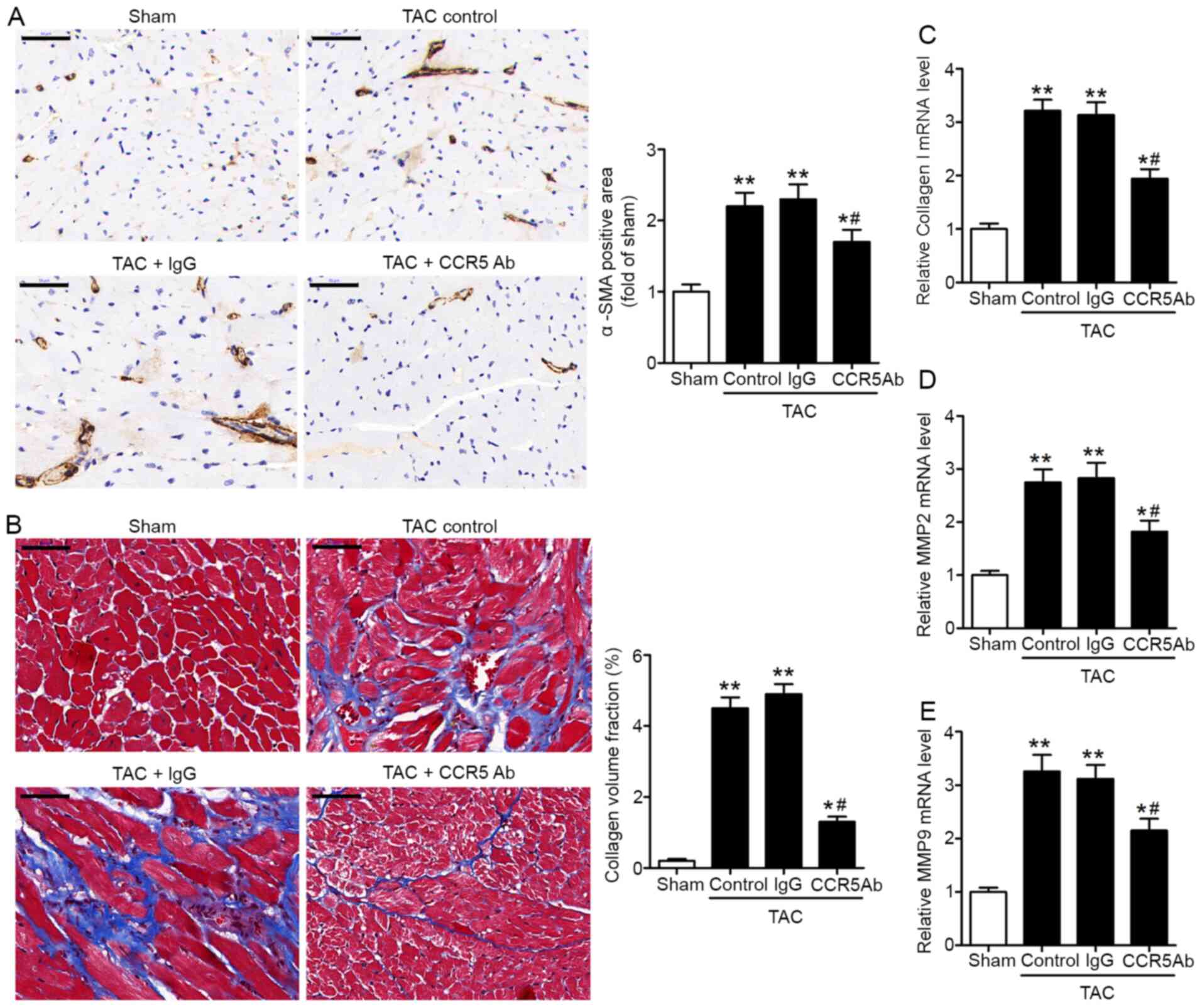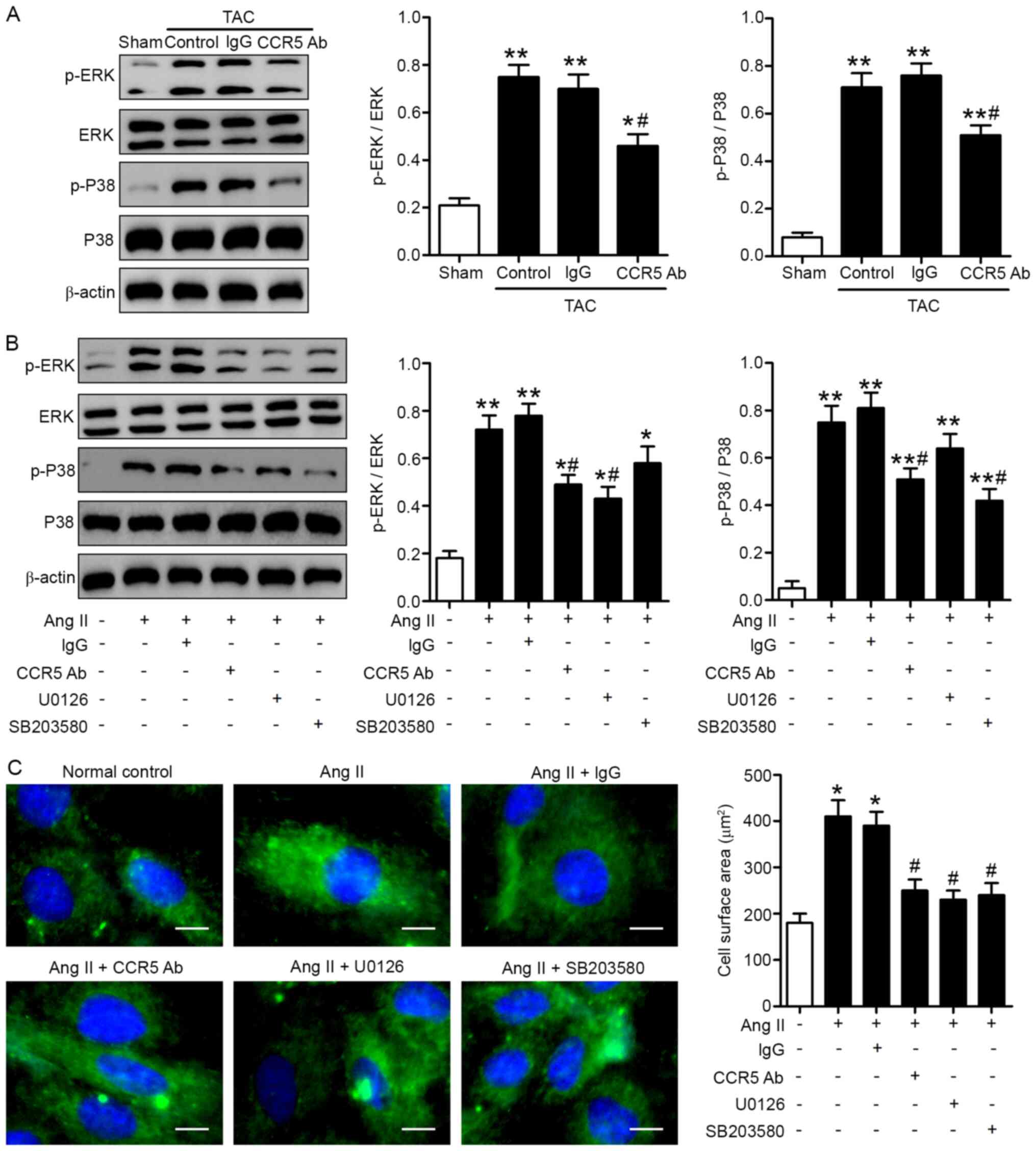|
1
|
Nkomo VT, Gardin JM, Skelton TN,
Gottdiener JS, Scott CG and Enriquez-Sarano M: Burden of valvular
heart diseases: A population-based study. Lancet. 368:1005–1011.
2006. View Article : Google Scholar : PubMed/NCBI
|
|
2
|
Rassi AN, Pibarot P and Elmariah S: Left
ventricular remodelling in aortic stenosis. Can J Cardiol.
30:1004–1011. 2014. View Article : Google Scholar : PubMed/NCBI
|
|
3
|
Badiani S, van Zalen J, Treibel TA,
Bhattacharyya S, Moon JC and Lloyd G: Aortic stenosis, a left
ventricular disease: Insights from advanced imaging. Curr Cardiol
Rep. 18:802016. View Article : Google Scholar : PubMed/NCBI
|
|
4
|
Carabello BA: Aortic stenosis: From
pressure overload to heart failure. Heart Fail Clin. 2:435–442.
2006. View Article : Google Scholar : PubMed/NCBI
|
|
5
|
Pellikka PA, Sarano ME, Nishimura RA,
Malouf JF, Bailey KR, Scott CG, Barnes ME and Tajik AJ: Outcome of
622 adults with asymptomatic, hemodynamically significant aortic
stenosis during prolonged follow-up. Circulation. 111:3290–3295.
2005. View Article : Google Scholar : PubMed/NCBI
|
|
6
|
Grimard BH and Larson JM: Aortic stenosis:
Diagnosis and treatment. Am Fam Physician. 78:717–724.
2008.PubMed/NCBI
|
|
7
|
Yarbrough WM, Mukherjee R, Ikonomidis JS,
Zile MR and Spinale FG: Myocardial remodeling with aortic stenosis
and after aortic valve replacement: Mechanisms and future
prognostic implications. J Thorac Cardiovasc Surg. 143:656–664.
2012. View Article : Google Scholar : PubMed/NCBI
|
|
8
|
Gregersen I, Holm S, Dahl TB, Halvorsen B
and Aukrust P: A focus on inflammation as a major risk factor for
atherosclerotic cardiovascular diseases. Expert Rev Cardiovasc
Ther. 14:391–403. 2016. View Article : Google Scholar : PubMed/NCBI
|
|
9
|
Koenen RR and Weber C: Manipulating the
chemokine system: Therapeutic perspectives for atherosclerosis.
Curr Opin Investig Drugs. 11:265–272. 2010.PubMed/NCBI
|
|
10
|
Carità P, Coppola G, Novo G, Caccamo G,
Guglielmo M, Balasus F, Novo S, Castrovinci S, Moscarelli M,
Fattouch K, et al: Aortic stenosis: Insights on pathogenesis and
clinical implications. J Geriatr Cardiol. 13:489–498.
2016.PubMed/NCBI
|
|
11
|
Shioi T, Matsumori A, Kihara Y, Inoko M,
Ono K, Iwanaga Y, Yamada T, Iwasaki A, Matsushima K and Sasayama S:
Increased expression of interleukin-1 beta and monocyte chemotactic
and activating factor/monocyte chemoattractant protein-1 in the
hypertrophied and failing heart with pressure overload. Circ Res.
81:664–671. 1997. View Article : Google Scholar : PubMed/NCBI
|
|
12
|
Yin X, Gao Y, Shi HS, Song L, Wang JC,
Shao J, Geng XH, Xue G, Li JL and Hou YN: Overexpression of SIRT6
in the hippocampal CA1 impairs the formation of long-term
contextual fear memory. Sci Rep. 6:189822016. View Article : Google Scholar : PubMed/NCBI
|
|
13
|
Finsen AV, Ueland T, Sjaastad I, Ranheim
T, Ahmed MS, Dahl CP, Askevold ET, Aakhus S, Husberg C, Fiane AE,
et al: The homeostatic chemokine CCL21 predicts mortality in aortic
stenosis patients and modulates left ventricular remodeling. PLoS
One. 9:e1121722014. View Article : Google Scholar : PubMed/NCBI
|
|
14
|
Turner J, Steinmetz O, Stahl R and Panzer
U: Targeting of Th1-associated chemokine receptors CXCR3 and CCR5
as therapeutic strategy for inflammatory diseases. Mini Rev Med
Chem. 7:1089–1096. 2007. View Article : Google Scholar : PubMed/NCBI
|
|
15
|
Ortlepp JR, Schmitz F, Mevissen V, Weiss
S, Huster J, Dronskowski R, Langebartels G, Autschbach R, Zerres K,
Weber C, et al: The amount of calcium-deficient hexagonal
hydroxyapatite in aortic valves is influenced by gender and
associated with genetic polymorphisms in patients with severe
calcific aortic stenosis. Eur Heart J. 25:514–522. 2004. View Article : Google Scholar : PubMed/NCBI
|
|
16
|
Rockman HA, Ross RS, Harris AN, Knowlton
KU, Steinhelper ME, Field LJ, Ross J Jr and Chien KR: Segregation
of atrial-specific and inducible expression of an atrial
natriuretic factor transgene in an in vivo murine model of cardiac
hypertrophy. Proc Natl Acad Sci USA. 88:8277–8281. 1991. View Article : Google Scholar : PubMed/NCBI
|
|
17
|
Balasubramanian S, Pleasant DL,
Kasiganesan H, Quinones L, Zhang Y, Sundararaj KP, Roche S,
O'Connor R, Bradshaw AD and Kuppuswamy D: Dasatinib attenuates
pressure overload induced cardiac fibrosis in a murine transverse
aortic constriction model. PLoS One. 10:e01402732015. View Article : Google Scholar : PubMed/NCBI
|
|
18
|
Henry WL, DeMaria A, Gramiak R, King DL,
Kisslo JA, Popp RL, Sahn DJ, Schiller NB, Tajik A, Teichholz LE, et
al: Report of the American Society of Echocardiography Committee on
nomenclature and standards in two-dimensional echocardiography.
Circulation. 62:212–217. 1980. View Article : Google Scholar : PubMed/NCBI
|
|
19
|
Ünlüer EE, Karagöz A, Bayata S and Akoğlu
H: An alternative approach to the bedside assessment of left
ventricular systolic function in the emergency department:
Displacement of the aortic root. Acad Emerg Med. 20:367–373. 2013.
View Article : Google Scholar : PubMed/NCBI
|
|
20
|
Toldo S, Bogaard HJ, Van Tassell BW,
Mezzaroma E, Seropian IM, Robati R, Salloum FN, Voelkel NF and
Abbate A: Right ventricular dysfunction following acute myocardial
infarction in the absence of pulmonary hypertension in the mouse.
PLoS One. 6:e181022011. View Article : Google Scholar : PubMed/NCBI
|
|
21
|
Livak KJ and Schmittgen TD: Analysis of
relative gene expression data using real-time quantitative PCR and
the 2(-Delta Delta C(T)) method. Methods. 25:402–408. 2001.
View Article : Google Scholar : PubMed/NCBI
|
|
22
|
Vachon CM, Sasano H, Ghosh K, Brandt KR,
Watson DA, Reynolds C, Lingle WL, Goss PE, Li R, Aiyar SE, et al:
Aromatase immunoreactivity is increased in mammographically dense
regions of the breast. Breast Cancer Res Treat. 125:243–252. 2011.
View Article : Google Scholar : PubMed/NCBI
|
|
23
|
Wang K, Long B, Zhou J and Li PF: miR-9
and NFATc3 regulate myocardin in cardiac hypertrophy. J Biol Chem.
285:11903–11912. 2010. View Article : Google Scholar : PubMed/NCBI
|
|
24
|
Li X, Lan Y, Wang Y, Nie M, Lu Y and Zhao
E: Telmisartan suppresses cardiac hypertrophy by inhibiting
cardiomyocyte apoptosis via the NFAT/ANP/BNP signaling pathway. Mol
Med Rep. 15:2574–2582. 2017. View Article : Google Scholar : PubMed/NCBI
|
|
25
|
Chin CWL, Everett RJ, Kwiecinski J, Vesey
AT, Yeung E, Esson G, Jenkins W, Koo M, Mirsadraee S, White AC, et
al: Myocardial fibrosis and cardiac decompensation in aortic
stenosis. JACC Cardiovasc Imaging. 10:1320–1333. 2017. View Article : Google Scholar : PubMed/NCBI
|
|
26
|
Fan D, Takawale A, Lee J and Kassiri Z:
Cardiac fibroblasts, fibrosis and extracellular matrix remodeling
in heart disease. Fibrogenesis Tissue Repair. 5:152012. View Article : Google Scholar : PubMed/NCBI
|
|
27
|
Heineke J and Molkentin JD: Regulation of
cardiac hypertrophy by intracellular signalling pathways. Nat Rev
Mol Cell Biol. 7:589–600. 2006. View
Article : Google Scholar : PubMed/NCBI
|
|
28
|
Berzingi C, Chen F and Finkel MS: p38 MAP
kinase inhibitor prevents diastolic dysfunction in rats following
HIV gp120 injection in vivo. Cardiovasc Toxicol. 9:142–150. 2009.
View Article : Google Scholar : PubMed/NCBI
|
|
29
|
Gao R, Fang Q, Zhang X, Xu Q, Ye H, Guo W,
He J, Chen Y, Wang R, Wu Z, et al: R5 HIV-1 gp120 activates p38
MAPK to induce rat cardiomyocyte injury by the CCR5 coreceptor.
Pathobiology. 86:274–284. 2019. View Article : Google Scholar : PubMed/NCBI
|
|
30
|
Haworth KG, Peterson CW and Kiem HP:
CCR5-edited gene therapies for HIV cure: Closing the door to viral
entry. Cytotherapy. 19:1325–1338. 2017. View Article : Google Scholar : PubMed/NCBI
|
|
31
|
Balashov KE, Rottman JB, Weiner HL and
Hancock WW: CCR5(+) and CXCR3(+) T cells are increased in multiple
sclerosis and their ligands MIP-1alpha and IP-10 are expressed in
demyelinating brain lesions. Proc Natl Acad Sci USA. 96:6873–6878.
1999. View Article : Google Scholar : PubMed/NCBI
|
|
32
|
Boven LA, Montagne L, Nottet HS and De
Groot CJ: Macrophage inflammatory protein-1alpha (MIP-1alpha),
MIP-1beta, and RANTES mRNA semiquantification and protein
expression in active demyelinating multiple sclerosis (MS) lesions.
Clin Exp Immunol. 122:257–263. 2000. View Article : Google Scholar : PubMed/NCBI
|
|
33
|
Mack M, Brühl H, Gruber R, Jaeger C, Cihak
J, Eiter V, Plachý J, Stangassinger M, Uhlig K, Schattenkirchner M,
et al: Predominance of mononuclear cells expressing the chemokine
receptor CCR5 in synovial effusions of patients with different
forms of arthritis. Arthritis Rheum. 42:981–988. 1999. View Article : Google Scholar : PubMed/NCBI
|
|
34
|
Patel DD, Zachariah JP and Whichard LP:
CXCR3 and CCR5 ligands in rheumatoid arthritis synovium. Clin
Immunol. 98:39–45. 2001. View Article : Google Scholar : PubMed/NCBI
|
|
35
|
Pokorny V, McQueen F, Yeoman S, Merriman
M, Merriman A, Harrison A, Highton J and McLean L: Evidence for
negative association of the chemokine receptor CCR5 d32
polymorphism with rheumatoid arthritis. Ann Rheum Dis. 64:487–490.
2005. View Article : Google Scholar : PubMed/NCBI
|
|
36
|
McCormack G, Moriarty D, O'Donoghue DP,
McCormick PA, Sheahan K and Baird AW: Tissue cytokine and chemokine
expression in inflammatory bowel disease. Inflamm Res. 50:491–495.
2001. View Article : Google Scholar : PubMed/NCBI
|
|
37
|
Mencarelli A, Cipriani S, Francisci D,
Santucci L, Baldelli F, Distrutti E and Fiorucci S: Highly specific
blockade of CCR5 inhibits leukocyte trafficking and reduces mucosal
inflammation in murine colitis. Sci Rep. 6:308022016. View Article : Google Scholar : PubMed/NCBI
|
|
38
|
Aldinucci D and Colombatti A: The
inflammatory chemokine CCL5 and cancer progression. Mediators
Inflamm. 2014:2923762014. View Article : Google Scholar : PubMed/NCBI
|
|
39
|
de Oliveira CE, Oda JM, Losi Guembarovski
R, de Oliveira KB, Ariza CB, Neto JS, Banin Hirata BK and Watanabe
MA: CC chemokine receptor 5: The interface of host immunity and
cancer. Dis Markers. 2014:1269542014. View Article : Google Scholar : PubMed/NCBI
|
|
40
|
Velasco-Velázquez M, Xolalpa W and Pestell
RG: The potential to target CCL5/CCR5 in breast cancer. Expert Opin
Ther Targets. 18:1265–1275. 2014. View Article : Google Scholar : PubMed/NCBI
|
|
41
|
Bronte V and Bria E: Interfering with
CCL5/CCR5 at the tumor-stroma interface. Cancer Cell. 29:437–439.
2016. View Article : Google Scholar : PubMed/NCBI
|
|
42
|
Weber C, Zernecke A and Libby P: The
multifaceted contributions of leukocyte subsets to atherosclerosis:
Lessons from mouse models. Nat Rev Immunol. 8:802–815. 2008.
View Article : Google Scholar : PubMed/NCBI
|
|
43
|
Jones KL, Maguire JJ and Davenport AP:
Chemokine receptor CCR5: From AIDS to atherosclerosis. Br J
Pharmacol. 162:1453–1469. 2011. View Article : Google Scholar : PubMed/NCBI
|
|
44
|
de Jager SC, Kraaijeveld AO, Grauss RW, de
Jager W, Liem SS, van der Hoeven BL, Prakken BJ, Putter H, van
Berkel TJ, Atsma DE, et al: CCL3 (MIP-1 alpha) levels are elevated
during acute coronary syndromes and show strong prognostic power
for future ischemic events. J Mol Cell Cardiol. 45:446–452. 2008.
View Article : Google Scholar : PubMed/NCBI
|
|
45
|
Afzal AR, Kiechl S, Daryani YP,
Weerasinghe A, Zhang Y, Reindl M, Mayr A, Weger S, Xu Q and Willeit
J: Common CCR5-del32 frameshift mutation associated with serum
levels of inflammatory markers and cardiovascular disease risk in
the Bruneck population. Stroke. 39:1972–1978. 2008. View Article : Google Scholar : PubMed/NCBI
|
|
46
|
Mettimano M, Specchia ML, Ianni A, Arzani
D, Ricciardi G, Savi L and Romano-Spica V: CCR5 and CCR2 gene
polymorphisms in hypertensive patients. Br J Biomed Sci. 60:19–21.
2003. View Article : Google Scholar : PubMed/NCBI
|
|
47
|
Rose BA, Force T and Wang Y:
Mitogen-activated protein kinase signaling in the heart: Angels
versus demons in a heart-breaking tale. Physiol Rev. 90:1507–1546.
2010. View Article : Google Scholar : PubMed/NCBI
|
|
48
|
Marber MS, Rose B and Wang Y: The p38
mitogen-activated protein kinase pathway - a potential target for
intervention in infarction, hypertrophy, and heart failure. J Mol
Cell Cardiol. 51:485–490. 2011. View Article : Google Scholar : PubMed/NCBI
|
|
49
|
Mutlak M, Schlesinger-Laufer M, Haas T,
Shofti R, Ballan N, Lewis YE, Zuler M, Zohar Y, Caspi LH and Kehat
I: Extracellular signal-regulated kinase (ERK) activation preserves
cardiac function in pressure overload induced hypertrophy. Int J
Cardiol. 270:204–213. 2018. View Article : Google Scholar : PubMed/NCBI
|
|
50
|
Schiattarella GG: Extracellular
signal-regulated kinase (ERK) in left ventricular pathological
hypertrophy: Not a new kid on the block anymore. Int J Cardiol.
271:260–261. 2018. View Article : Google Scholar : PubMed/NCBI
|
|
51
|
Li M, Sun X, Zhao J, Xia L, Li J, Xu M,
Wang B, Guo H, Yu C, Gao Y, et al: CCL5 deficiency promotes liver
repair by improving inflammation resolution and liver regeneration
through M2 macrophage polarization. Cell Mol Immunol. 17:753–764.
2020. View Article : Google Scholar : PubMed/NCBI
|
|
52
|
Suarez-Carmona M, Chaorentong P, Kather
JN, Rothenheber R, Ahmed A, Berthel A, Heinzelmann A, Moraleda R,
Valous NA, Kosaloglu Z, et al: CCR5 status and metastatic
progression in colorectal cancer. OncoImmunology. 8:e16261932019.
View Article : Google Scholar : PubMed/NCBI
|
|
53
|
Lan YY, Wang YQ and Liu Y: CCR5 silencing
reduces inflammatory response, inhibits viability, and promotes
apoptosis of synovial cells in rat models of rheumatoid arthritis
through the MAPK signaling pathway. J Cell Physiol.
234:18748–18762. 2019. View Article : Google Scholar : PubMed/NCBI
|
|
54
|
Zhai P, Yamamoto M, Galeotti J, Liu J,
Masurekar M, Thaisz J, Irie K, Holle E, Yu X, Kupershmidt S, et al:
Cardiac-specific overexpression of AT1 receptor mutant lacking G
alpha q/G alpha i coupling causes hypertrophy and bradycardia in
transgenic mice. J Clin Invest. 115:3045–3056. 2005. View Article : Google Scholar : PubMed/NCBI
|
|
55
|
Yu CJ, Tang LL, Liang C, Chen X, Song SY,
Ding XQ, Zhang KY, Song BL, Zhao D, Zhu XY, et al:
Angiotensin-converting enzyme 3 (ACE3) protects against pressure
overload-induced cardiac hypertrophy. J Am Heart Assoc. 5:52016.
View Article : Google Scholar : PubMed/NCBI
|


















